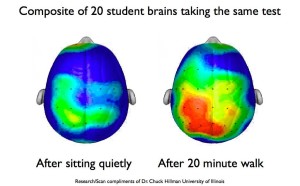English
What is weeting & who is it for?
Weeting is a new form of consultation for two to five people who like to walk outside and deliberate at the same time. Weetings are fixed routes, with notable points along the way. These points are relevant for orientation during the consultation session and can be helpful to provide more structure. Weeting offers different routes, that can last 15 up to 90 minutes at a time.
Weeting is suitable for any person who likes to organize a meeting outdoors in the urban nature. They can be professionals, managers, employees, consultants, self-employed workers or teachers. Weeting helps people to get better results and it gives you energy. When you plan to organize a weeting in a city, please allow for a maximum of three people to participate to get the best yield. It is possible to organize a weeting up to five people in quiet and spacious locations, like a university campus or a park.
Imagine
Weeting route shapes your consultation
- Go for freestyle: you use the landmarks along the route purely for orientation and in order to keep an eye on the time you planned to work while walking.
- Use a pre-planned agenda: link your own agenda to the landmarks.
- Use the consultation structure
Basic weeting structure
START
Start walking immediately
GOAL
Exchange with your colleague the result you’re happy with at the end of the meeting
INTERIM SCORE
Is the discussion effective and according to plan? This is a control question. Determine what needs to be discussed in the second half of the meeting.
RECORD AGREEMENTS
Wrap up and record agreements, at least the next action. Write, type or use voice to text function on your phone.
END
You're done!
Weeting forms
The zeven most important weeting forms
1. basic weeting - the fixed weeting structure with three standard points linked to landmarks: goal/when happy, checkpoint, conclusions/ first action;
2. freestyle - own steering on the agenda, landmarks on the route are meant for your sense of time;
3. timeboxing - fixating the time for a topic, linking the agenda to landmarks down the road. You don't walk on until you've completed the point;
4. president's walk - A short round, which you walk over and over again for as long as it takes to discuss a topic;
5. recap meeting - weeting with time at the end to recap the meeting sitting down and record agreements;
6. swap - weeting with a group, where you swap conversation partners at set points or times along the way;
7. breakout weeting - a weeting as part of a seated meeting, focused on a specific, jointly established goal. You can combine this form of weeting with timeboxing or a recap meeting.
Benefits
Practical Tips
The routes are easy to walk. You can choose to walk the route yourself once beforehand, for example during lunch, so that you already know the way. Take a moment to consider the key points you want to discuss; they will be important when you actually hold the weeting.
Wear comfortable shoes
Do not carry a heavy bag
Distribute meeting documents on time
Taking notes? Bring a notebook or use the dictaphone on your phone. Make use of voice - to - text apps which turn your speech into text on the spot.
Drink beforehand or take something with you on the go
Rainy day? Check the weather app on your mobile and shorten your route when needed. Otherwise, stay inside. Die-hards can opt to use an umbrella.
What does science say
There is growing evidence that walking not only improves health, but also increases creativity.
People live on average 1.8 to 4.5 years longer
A large study conducted in the United States shows a strong link between exercise and longevity. The study compares different types of exercise. Just a little bit of exercise has a huge impact on your life expectancy.
By walking 75 minutes per week, a person gains an average of 1.8 life years. At 2.5 hours per week the gain is on average 3.4 years. With more than an hour of exercise daily, the gain can run up to 4.5 years. This is based on six studies, involving 650,000 volunteers, who were followed over a period of ten years. People with a higher BMI had the same gain: you can better have an active lifestyle and be too fat, than be inactive and slim. (Barry et al, 2014)

Better concentration and more focus after 20 minutes of walking: this result comes from a research study conducted by Dr. Hillman of the University of Illinois. The image on the right shows the compilation of MRI scans of the brain in this test of 20 students, after sitting still (left), and after 20 minutes of exercise (right). The red area shows stronger brain activity. These areas are also associated with happiness.
Research conducted at the University of Leiden by cognitive psychologist Colzato and others, shows that both convergent and divergent thinking is improved by exercise. So walking doesn't just help with brainstorming.
Stanford University in California found a huge enhancement of divergent thinking in 4 experiments. Participants were up to 60% more productive. The effect occurs after only 5 minutes of walking; walking outside or on a treadmill made little difference. (Oppezzo and Schwartz, 2014). 80% of the participants benefited from walking, these positive effects apply especially to subjects who already have a rudimentary physical condition: people who get tired of walking do not have enough energy left for other tasks.
Weeting makes meetings more productive, creative and healthier.
